When he was fourteen he started weaning violets in the greenhouse and when he was nineteen he was done with it. In the meantime he has been fused with horticulture for many years, from his home in Thailand. After all, there are plenty of opportunities in Southeast Asia. Especially Vietnam has his interest now, says Jan Hoogewoning. "The demand for knowledge is great, the mentality is good and there are good export opportunities. Jan helps growers with valuable irrigation and climate solutions from the Dutch company Ridder. In addition, he’s active in ornamental horticulture with the products of Anthura and Interplant Roses.
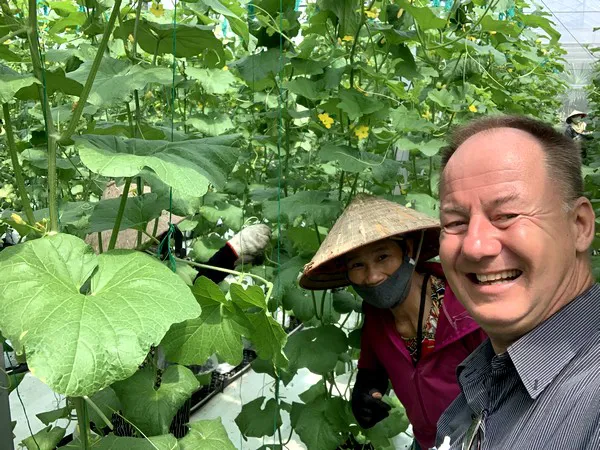
Opportunities in the market
He has just returned from Da Lat and will be heading back to Vietnam in a week for the HortEx Vietnam Exhibition, which will be held from 26-28 February in the SECC in Ho Chi Minh City. From his permanent home in Thailand, Jan Hoogewoning is strongly involved in the developments of Vietnamese horticulture. There are many opportunities in that market, he says. "It's a sad origin story, but because of Vietnam's history, the country's population structure is unique. There is no ageing of the population and the middle class is growing year after year. The Vietnamese middle class is the fastest growing in Southeast Asia. As a result, both healthy food and ornamental horticulture are getting off the ground. People can spend more on flowers and plants. That's more of an experience than a plastic flower".
Trade opportunities
Then there are the opportunities for Vietnam as an export country. "Vietnam itself has almost 100 million inhabitants and can play an important role in the food supply of Southeast Asia. Vietnam has the ambition to become the “growing heart” of Southeast Asia. Apart from supplying Southeast Asia, Vietnam also recently signed a free trade agreement with the EU, which will offer even greater export opportunities. Already Vietnam exports its fruits & vegetables to over 60 countries worldwide.”
The prolonged trade war between the US and China offers further opportunities for Vietnam as a production country of technologies. A number of companies have already decided to locate their new factories in Vietnam. "China may have the right infrastructure, but Vietnam is more stable as a manufacturing country."
Specifically for horticulture, there is a horticultural background and a great demand for knowledge. "Last October, during the kick-off meeting of the HortEx exhibition in the horticultural region of Da Lat, extra chairs had to be placed continuously in the hall. You get good questions and we see that growers really want to move forward".
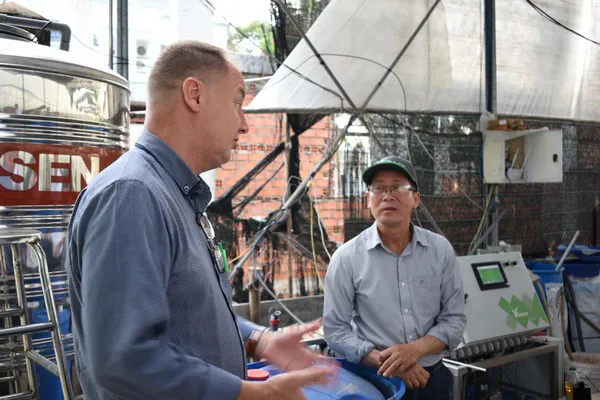
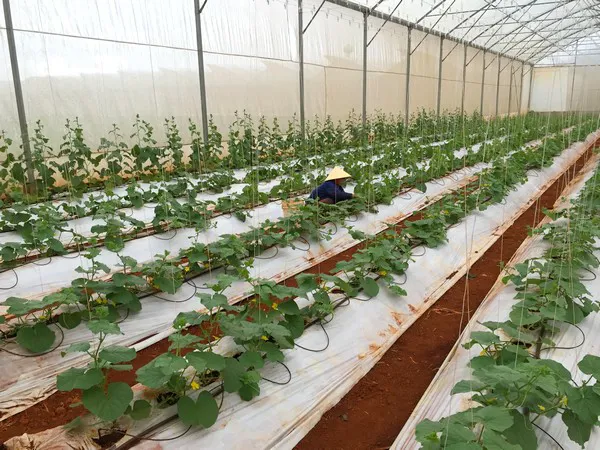
Complete climate solutions
But what does moving forward really mean? The high-tech market in Vietnam is limited, says Jan. "You see that large greenhouse companies like Hasfarm work with fully controllable greenhouses. These companies are working with solutions from the higher segment. They improve their efficiency and quality with this, and can therefore also pass on this type of investment in the final price of the products they sell".
At Hasfarm, Ridder provided high-end, integrated solutions for greenhouse climate and irrigation control. These kinds of high-quality installations are also feasible for breeding companies. "You can see that they are switching from direct injection systems to, for example, a more precise, yet still affordable irrigation solution such as the Ridder FertiMiX-Go!. This fertigation system is able to compose a more specific nutrient blend and guarantees a more consistent, automated fertilization of the crop. That offers them a big step forward, as the quality and production will be greatly improved, while cost of water, fertilizers and the risk of human mistakes will decrease.
"But", Jan also directly puts into perspective, "there aren't that many companies like Hasfarm." There are only a handful of high-tech glass greenhouses throughout Vietnam. "The sector is made up of countless smaller horticultural businesses covering about half a hectare. If you install expensive technology there, that's a considerable investment for the grower. Therefore you need to re-think what is your added value."
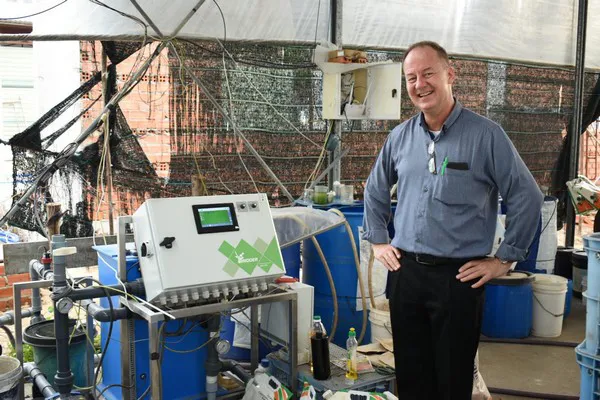
For this reason, Ridder developed a special series of equipment and solutions that are adapted to the needs of small-scale farmers; systems that require an initial first investment, but can be expanded with additional functionality and capacity as the grower ‘grows’ and earns more money. “In the design-requirements, much attention was spent to the situation of the end-user; the systems needed to be easy to operate, bear intuitive touch-control options and have the option to be controlled via the cloud on a mobile device. For many growers it is the first step into automating their greenhouse and optimizing their basic processes. The real added value of Ridder’s systems lie in the fact that they are expandable and only come with the necessary functionalities. So if you don’t have a screen or fan system, you don’t have to invest in a controller that can also control screens or fans. When you are upgrading your greenhouse, our system can be upgraded easily with a very small additional investment. This is how we can keep the ROI as low as possible."
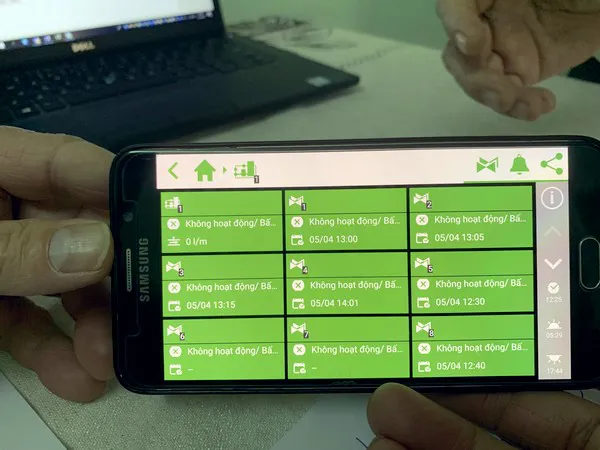
"Recently a grower told me he was on a trip to Europe and he received an email for the delivery of plants to Hanoi within 4 days. He immediately answered the email positively and took his smart phone to open the app that can control the climate in his greenhouse. He mentioned that he had to adjust the temperature to make the plants get used to the colder climate in Hanoi. He was happy to use Ridder’s HortiMaX-Go! app and to be able to deliver a better product to the end customer", Jan gives as an example of the digitising market.
Market at a tipping point
Jan sees great opportunities in the Vietnamese market. "The market is developing and is at a tipping point. Five years ago, for example, we saw a lot of bamboo greenhouses. These are disappearing at a rapid pace. With the help of the government, which certainly supports the growers and also encourages the import of technology, growers are researching which investments are suitable for them. Due to the climate conditions in the country, many growers are forced to keep working with crop protection products in hot and humid seasons if they want to supply all year round, but with a number of technical solutions they can offer more, sustainable and better quality products".
However, the fact that the Vietnamese market is in its infancy also plays a role in this. In horticulture, for example, quite a few players are active with limited knowledge of technology. "We see, for example, that an installation breaks down because certain technical know-how is out of stock, or they used the wrong drive systems for a certain installation. On the one hand, this offers opportunities because Ridder also has a good reputation for quality and we now have more than 2,000 Ridder drive systems up and running in Vietnam."
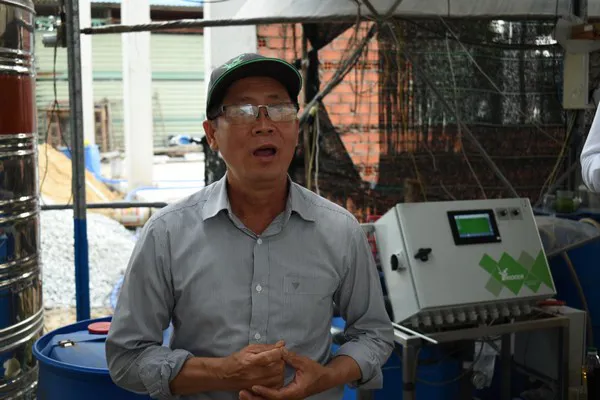
Feasible technique
Feasible technique is what it's all about, according to Jan. "A screening installation is high-tech for many growers here and the same goes for side-wall ventilation, offering a better natural air distribution. You have to understand that in order to be successful in the Vietnamese market. There are a few high-tech companies with an interest in highly technical subjects, but most of the market is more interested in smaller-scale solutions that will offer them benefits over a short term. This includes making the technique accessible in their own language, so any barriers disappear. Finding the right technology to suit the grower, that's what matters, and helping them make the most out of it. Whether it's a plastic greenhouse or a FertiMix-Go!, anything offered in this market has to fit the grower."
For more information:
Ridder
www.ridder.com
The HortEx Vietnam will take place from 26-28 February 2020 at the Saigon Exhibition & Convention Center (SECC) in Ho Chi Minh City.
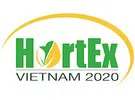
For more information:
HortEx Vietnam
www.hortex-vietnam.com
